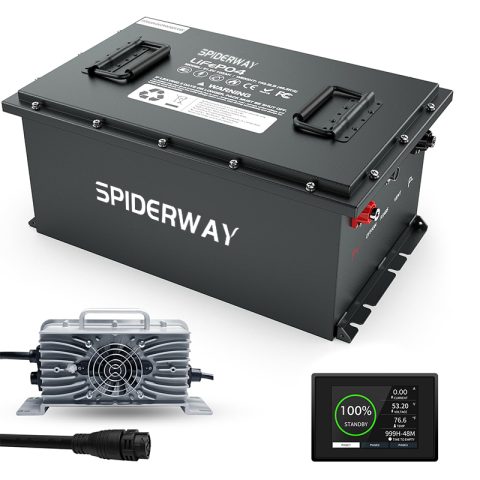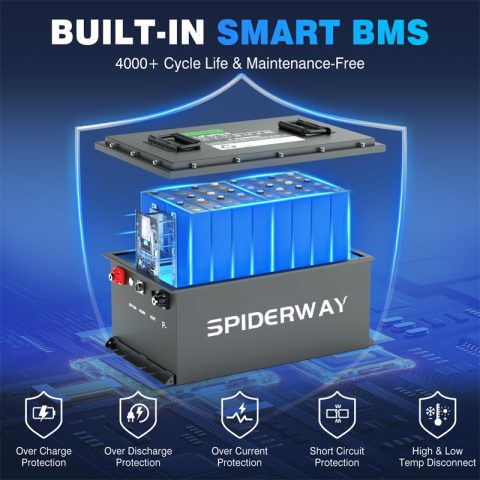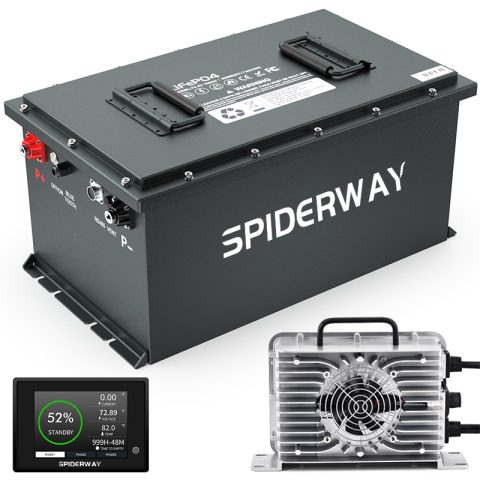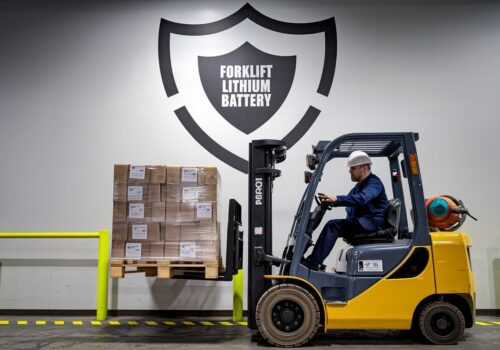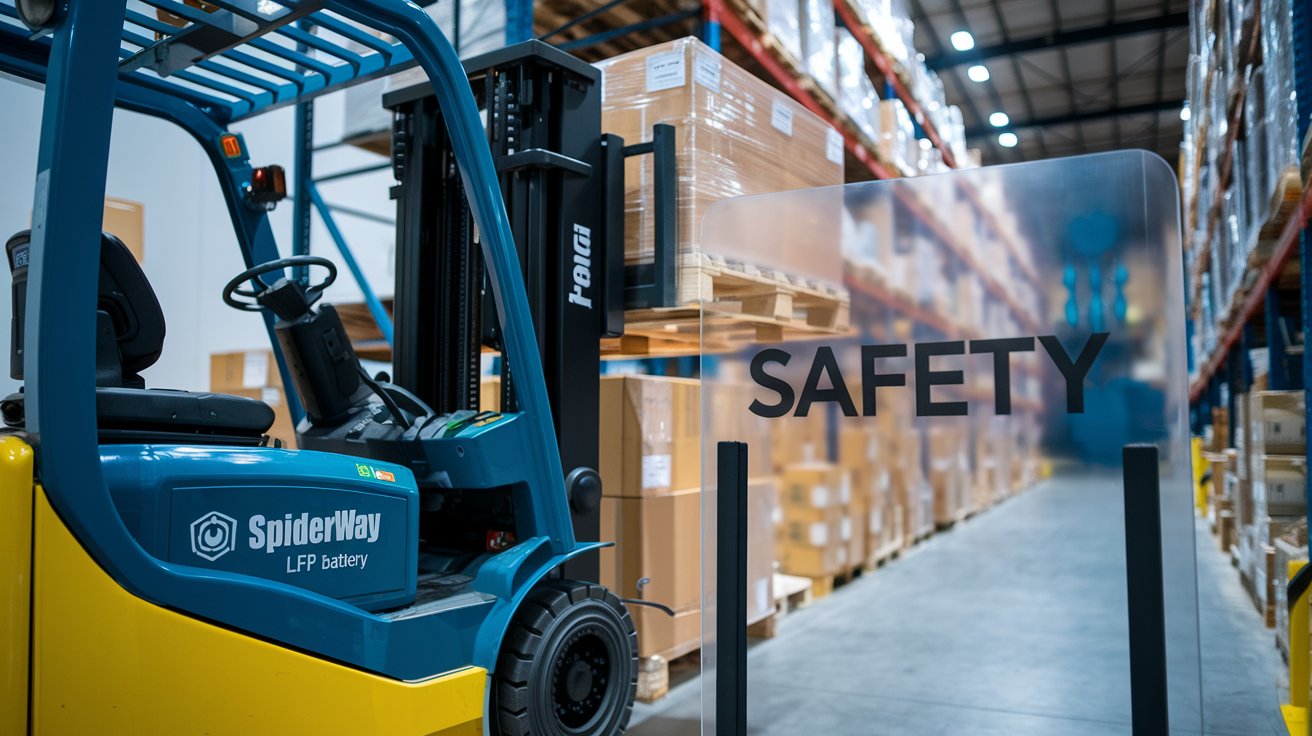
Understanding the Safety Edge of Lithium Iron Phosphate (LiFePO4) Batteries in Comparison to Ternary Lithium Batteries
Lithium Iron Phosphate (LiFePO4) and ternary lithium batteries exhibit distinct characteristics, especially concerning “energy density” and “safety.” While ternary lithium batteries boast higher energy density, safety concerns are often raised. On the other hand, LiFePO4 batteries, despite having lower energy density, are widely recognized for their enhanced safety profile.
For instance, in 18650 cells (diameter: 18mm, height: 65mm), a ternary lithium battery can reach a capacity of up to 3500mAh, whereas a LiFePO4 battery caps at approximately 2000mAh within the same volume.
Why Lithium Iron Phosphate Batteries Are Deemed Safe
LiFePO4 batteries utilize lithium iron phosphate as the cathode material. This composition is significantly more stable compared to alternatives like lithium cobalt oxide or nickel-based materials. The P-O bond in LiFePO4 is exceptionally resistant to breakdown, even under high temperatures or overcharging conditions. This attribute minimizes the risk of heat-related issues and prevents the release of highly reactive substances, thereby significantly enhancing safety.

Advantages of Lithium Iron Phosphate Batteries:
- Extended Lifespan: LiFePO4 batteries can endure over 4000 cycles at 80% depth of discharge (DOD), translating to a lifespan of 10–15 years under typical usage scenarios.
- Reliability in Use: Even in extreme conditions, such as vehicular accidents, SPIDERWAY batteries have passed rigorous safety tests and are certified to not explode.
- Rapid Charging Capability: These batteries can achieve a full charge in just 40 minutes with the aid of a specialized charger operating at 1.5C.
- High-Temperature Tolerance: They can withstand temperatures ranging from 350–500°C without any compromise in safety.
- Large Capacity and No Memory Effect: The batteries are immune to the “memory effect,” ensuring consistent capacity over time.
- Ecological Responsibility: LiFePO4 batteries are non-toxic, have minimal environmental impact, and are crafted from abundant, cost-effective raw materials.
Ternary lithium batteries, which commonly incorporate nickel, cobalt, and manganese (NCM), also exhibit certain safety features:
- Stable Cathode Structure: The oxygen within the ternary lithium material’s structure is stable and not easily released, which diminishes the likelihood of fire or explosion.
- Consistent Voltage Profile: The manufacturing process results in smaller ternary lithium particles, leading to a more uniform internal structure. This arrangement promotes operational stability.
- Safe Charging and Discharging: The materials’ oxidation capability is not strong, making it difficult for redox reactions to occur during the charge and discharge cycles, thus ensuring a safer operational environment.

However, ternary lithium batteries can pose safety hazards under extreme conditions:
- In high-impact scenarios, such as vehicular accidents, the battery diaphragm might get damaged, leading to a short circuit. The heat generated can trigger thermal runaway, rapidly escalating the temperature beyond 300°C.
- The thermal stability of ternary lithium batteries is inferior to that of LiFePO4, as they can decompose at temperatures below 300°C, potentially leading to a rapid deflagration.
Which Battery is Safer?
The primary safety distinction between the two types hinges on their cathode materials. Ternary lithium batteries start to decompose at around 200°C, releasing oxygen and accelerating electrolyte combustion, which can result in fire. Conversely, SPIDERWAY LiFePO4 batteries maintain stability up to 700-800°C and do not release oxygen molecules, reducing the likelihood of combustion.
- Product on sale51.2V 67Ah Golf Cart Lithium LiFePO4 Battery 200A BMS 6000+ Cycle.Original price was: $1,350.00.$1,200.00Current price is: $1,200.00.
- Product on sale51.2V 105Ah Golf Cart Lithium LiFePO4 Battery 200A BMS 6000+ Cycle.Original price was: $1,800.00.$1,459.99Current price is: $1,459.99.
- Product on saleSPIDERWAY 51.2V 67Ah Lithium Battery for Golf Cart EZGO & Club CarOriginal price was: $1,350.00.$1,200.00Current price is: $1,200.00.
- Product on sale51.2V 150Ah LiFePO4 Golf Cart Battery 6000+Deep Cycles Strong 150A BMSOriginal price was: $2,250.90.$2,095.00Current price is: $2,095.00.
- Product on sale48V 105AH LiFePo4 Golf Battery Lithium Ion Battery Bluethooth APP MonitoringOriginal price was: $1,680.00.$1,540.00Current price is: $1,540.00.
- 72V 105Ah Golf Battery Lithium -lon LCT Touch Screen 4000+Cycel life$2,139.99
- Product on sale48V(51.2V) 230AH LiFePO4 Golf Cart LiFePO4 Battery 200A BMS IP67 10 Year 6000+Original price was: $3,150.00.$3,055.00Current price is: $3,055.00.
- Product on saleGolf Cart Lithium Battery 48V(51.2V) 67Ah With Bluetooth Battery BMS 6000+ CycleOriginal price was: $1,350.00.$1,200.00Current price is: $1,200.00.
- Product on sale38.4V(36V) 105Ah golf cart lithium batteryOriginal price was: $1,320.00.$1,100.00Current price is: $1,100.00.
It’s important to note that safety is not solely dependent on the materials. The overall safety of a battery system is contingent upon the Battery Management System (BMS), which oversees overcharge, over-discharge, temperature, and current to prevent accidents.
While ternary lithium batteries are more susceptible to fire in extreme conditions, a robust BMS can mitigate these risks. LiFePO4 batteries are inherently safer due to their chemical composition but still necessitate proper system management to ensure absolute safety. Therefore, it’s inaccurate to label ternary lithium batteries as inherently unsafe or LiFePO4 batteries as always completely safe—both rely heavily on thoughtful design and management.

